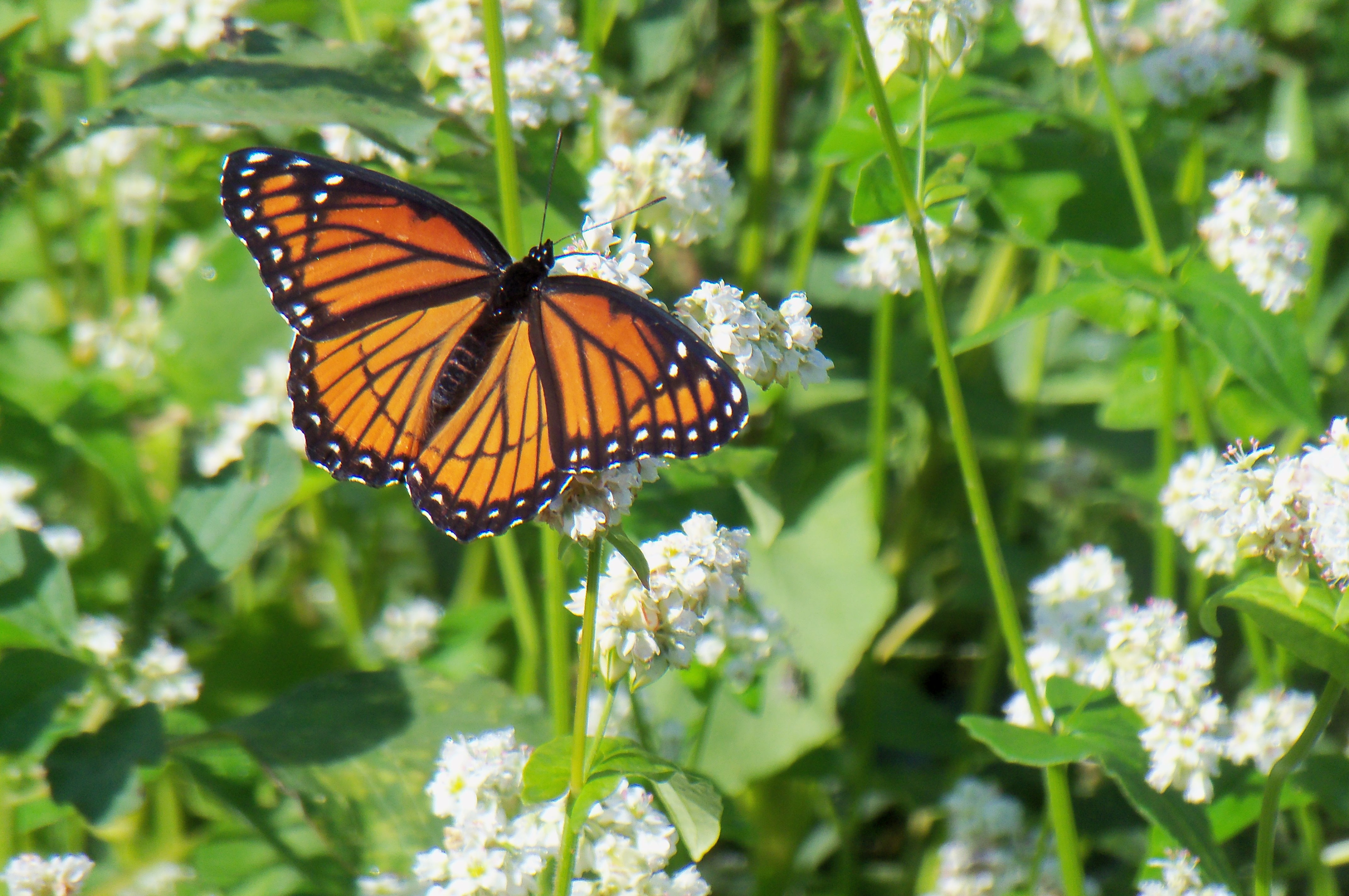 As I walked into a patch of buckwheat, I was calmed and energized by the intense buzzing of bees around me. On a perfectly clear September day, the bees worked tirelessly and harmoniously to harvest nectar and pollen before winter. Their sounds and activity soothed me after days of news: the flood in Texas, the fires in the west and the threat of nuclear weapons.
As I walked into a patch of buckwheat, I was calmed and energized by the intense buzzing of bees around me. On a perfectly clear September day, the bees worked tirelessly and harmoniously to harvest nectar and pollen before winter. Their sounds and activity soothed me after days of news: the flood in Texas, the fires in the west and the threat of nuclear weapons.
Their movements reminded me of the images of people using their own boats to rescue others from the flood in Houston, making one connection at a time. Then a larger question came to me: How can we harness the healing power of nature to restore life to areas damaged by fire and flood?
One winter's evening, I counted 623 kernels from one ear of corn. Corn often produces two ears—more than 1250 seeds--a thousand-fold increase! From my experience as a gardener, that is the magnitude of nature's bounty if we work in harmony with nature.
On my farm, I focus on creating an environment that is beautiful, bountiful and balanced. Sometimes, that means doing an unpleasant chore. This morning, I pulled spiny amaranth from the buckwheat patch. This weed had a fat, fleshy stem and a thorn where each branch meets the stem. Each plant drops thousands of seeds, so the next season, it forms colonies of plants. Its roots were easy to pull in the moist, friable soil; however, so in just thirty minutes, I had reduced the weed's seeds exponentially.
Jeff Poppen, a biodynamic farmer in Tennessee, taught me to plant buckwheat, radish and turnip seeds together in July. The buckwheat loves heat. It comes up quickly and provides shade from the intense sun of August for the other crops and for the soil itself. As the season cools, the turnips and radish grow well. All the plants benefit from growing together, they attract lots of insects, and they build the soil.
As I pulled the weeds, I saw bumblebees, honey bees, native bees, sweat bees, a hornet or two and bees I have never seen before. The honey bees landed on the underside of some flowers, crawled to the top of the flower, collecting pollen and nectar within a second or two. Then they flew to the next cluster. Various butterflies floated from flower to flower, while grasshoppers jumped from one stem to another. The patch was throbbing with vitality: it was a symbiotic community that sustains life itself.
World-class gardener Alan Chadwick advocated such an approach, as did Rudolf Steiner, the founder of biodynamic agriculture. Humanity has only two choices, he said, either start once again to learn from the whole of nature—to enter into the interrelationships of living beings--or allow both nature and human life to degenerate and die off.
When the beekeeper prepared to bring hives to my farm last month, I showed him the patches of buckwheat I had planted. “Bees don't go for buckwheat. Bumblebees do, but honeybees don't,” he said flatly. He had once put hives of bees in a large field of buckwheat my neighbor planted. No bees came. Now they were clearly relishing the buckwheat mid-morning. By midday, they had moved on to a wild grape vine at the top of the garden. What made the difference? I do not know.
I do know that diversity and complexity woven together create balance in the garden. A bee flies over one flower and lands on another. A neighbor carries a child in their arms above the water, but gets a raft for the adult. Rescuers found survivors and helped them leave dangerous situations. This morning, I saw a buckwheat patch throbbing with vitality as plants and animals worked synergistically. As we rebuild, let's include nature. Let's attend to what thrives in the soil, what moves and breathes in the air, what lives and moves in the water. Let's weave together a community of life that sustains us all!
